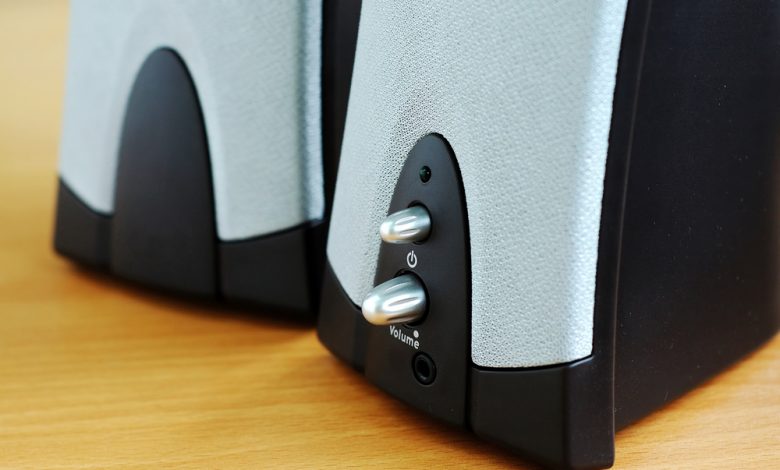
There are a number of computer issues that could cause your audio to cut or fade out unexpectedly. As this issue doesn’t come with an error code, you will have to work your way through a long list of solutions to find what works for you.
In this article, we have summarized the most common cases of audio cutting/fading out and listed the best solutions anyone can apply to troubleshoot the issue.
Table of Contents
Run Windows Troubleshooter
When dealing with an unknown problem, an excellent place to start is the Windows troubleshooter. This feature was made to diagnose and resolve various system issues.
- Go to the Start menu, and click the Settings (⚙) button (above the power button).
- In the Windows Settings window, type “troubleshooter” and select the “Troubleshoot settings” option from the drop-down menu.
- In the Settings window, under Troubleshoot, scroll down the right panel to the “Get up and running” section.
- Select Playing Audio, and click the “Run the troubleshooter” button.
- Wait for the Troubleshooter to diagnose your system. If a problem is detected, follow the instructions to resolve it.
Check the Audio Device Driver
Faulty or outdated audio device drivers tend to be the usual suspects of any audio issue. The drivers are pieces of software that allow Windows to control your playback devices (speakers, headphones). If an issue of any kind interferes with the driver, you will experience odd problems, such as your audio fading out.
Uninstall and then reinstall your audio device driver to ensure that no missing or corrupted files are causing the driver to malfunction.
- Go to the Start menu, type “device manager” and select the Device Manager app.
- In the Device Manager window, click on the horizontal arrow next to Sound, video and game controllers.
- Under Sound, video and game controllers, right-click on your audio device and select “Uninstall device” from the drop-down menu.
- In the pop-up window, check the checkbox next to “Delete the driver software from this computer” and click the “Uninstall” button.
NOTE: If you are not sure which entry is your audio device, you can uninstall all drivers as we will reinstall them in the next step.
- Restart your computer. Upon system bootup, windows will install the missing drivers automatically.
- Check if the sound fading issue is resolved.
In addition to reinstalling your audio driver, you can also update it because the latest version might include a fix for the sound fading issue.
- Open the Device Manager and expand the list of Sound, video and game controllers.
- Right-click on your audio device and select “Update device” from the drop-down menu.
- You will be asked to choose between automatic and manual update options. Note that while the automatic update installs the most recent update without your interference, this option will deliver the newest driver version only if the driver manufacturer has registered the update in Microsoft’s database. Therefore, it is recommended that you check the device manufacturer’s website to make sure that you have the latest driver version.
Adjust Windows Audio Settings
Once you crossed driver issues off your list, take a look at the audio settings configuration. The Windows sound enhancement settings, Communications settings, and Speakers settings are known troublemakers. Get your settings in order to get the best Windows performance.
Adjust Communications Settings
- Right-click the volume/speaker icon on the taskbar and select “Open sounds settings” from the context menu.
- In the Settings window, under Sound, scroll the left panel to “related settings” and select the Sound Control Panel link.
- In the Sound window, open the Communications tab.
- In the Communications tab, select “Do nothing” and click the “Apply” button, then “OK”.
Change Speakers Settings
- Right-click the volume/speaker icon on the taskbar and select “Open sounds settings” from the context menu.
- In the Settings window, under Sound, scroll the left panel to “related settings” and select the Sound Control Panel link.
- In the Sound window, open the Playback tab.
- In the Playback tab, select (mark) the default audio device and click the “Configure” button.
- In the Speaker Setup window, click the “Next” button.
- In the Speaker Setup window, under the “Full-range speakers” setting, uncheck the "Front left and right" box and click the “Next” button.
- Click “Finish” for your changes to be applied.
- Check if the sound fading out issue is fixed.
Adjust Enhancements Settings
- Right-click the volume/speaker icon on the taskbar and select “Open sounds settings” from the context menu.
- In the Settings window, under Sound, scroll the left panel to “related settings” and select the Sound Control Panel link.
- In the new Sound window, under the Playback tab, right-click on the default audio device and select “Properties” from the context menu.
- In the speaker properties window, open the Enhancements tab.
- Under the Enhancements tab, check the checkbox next to “Disable all enhancements”.
- Click “Apply” to save the changes and then “OK”.
- Check if the sound fading out issue is fixed.





Leave a Reply
Thank you for your response.
Please verify that you are not a robot.